Vet Bring Back Special: Spreewerk P.38 Edition
No! I have not been on vacation
Hey guys, it's been a while. No, I have not been away on vacation. I've actually been working on the Third Reich Lugers book, and we're almost done. Now you we haven't had a video in a while, but you're going to get hit with a flurry of videos once the book comes out because Randy and I have been busy making a video for every chapter of the book. So when you read a chapter, you watch the video. Anyway, I think you're really going to like it. But that's kept me busy.
Meanwhile... A little bit of everything
In the meantime, I did have a walk in Wednesday. Also, this is a quickie. Also, this is a vet bring back story. So a little bit of everything today, but quickly wanted to show you this gun, a P.38 which was a vet bring back. First I'm going to tell you a little bit about the gun and then I'm going to read you the story about the vet who brought it back.
There's more
Now the good stuff doesn't stop there. Because at the end, stay tuned all the way to the end, that's called a teaser by the way, stay to the end. I've got some things to give away and all you have to do is say I like free stuff and tell us what you're interested in. And we will do a drawing to see who the lucky winners are. So let's get started.
Here we go
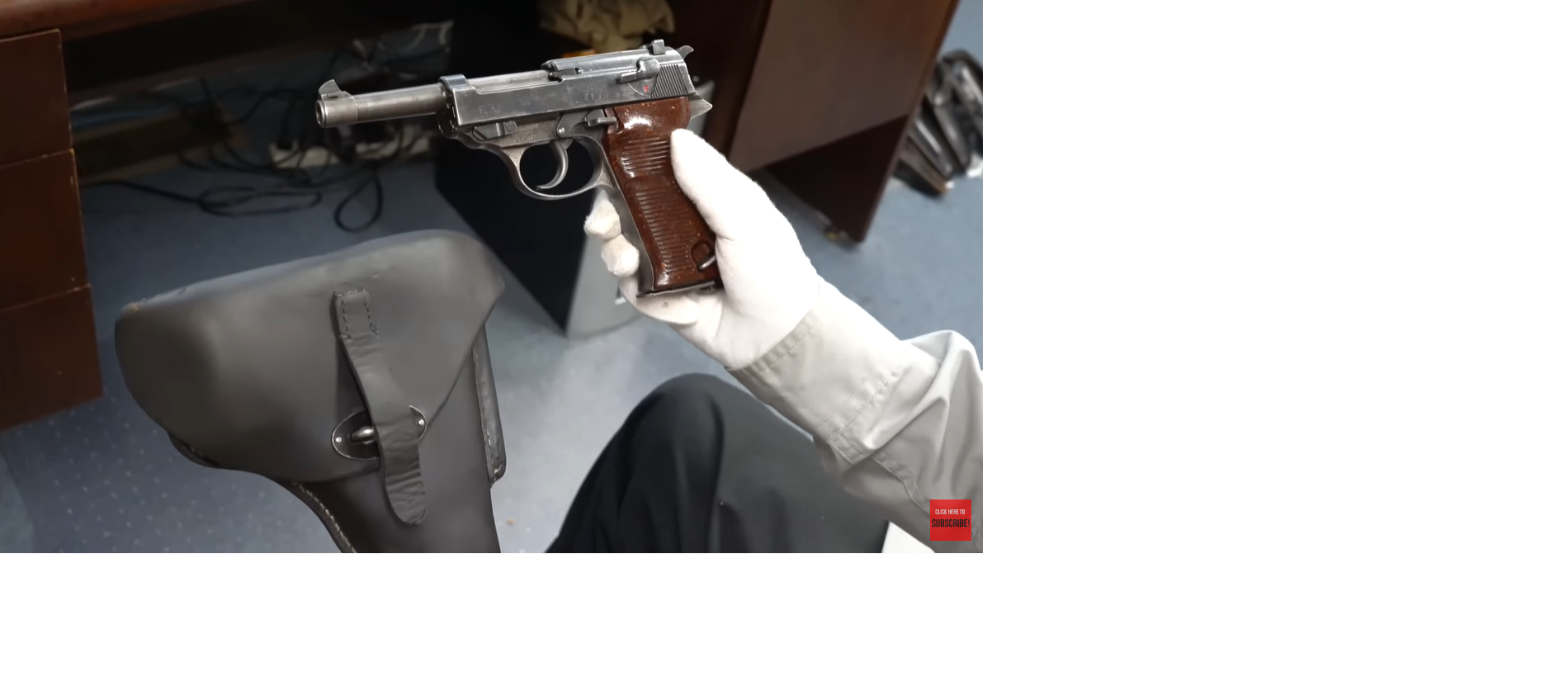
This is the p.38 that Clayton Mason -- we're going to hear a little bit more of his story. Clayton Mason was in the US Air Corps, later he stayed in during the Korean War in the US Air Force. This is obviously a P.38, CYQ which means that came from the Spreewerk Factory in Czechoslovakia.
Factory Error
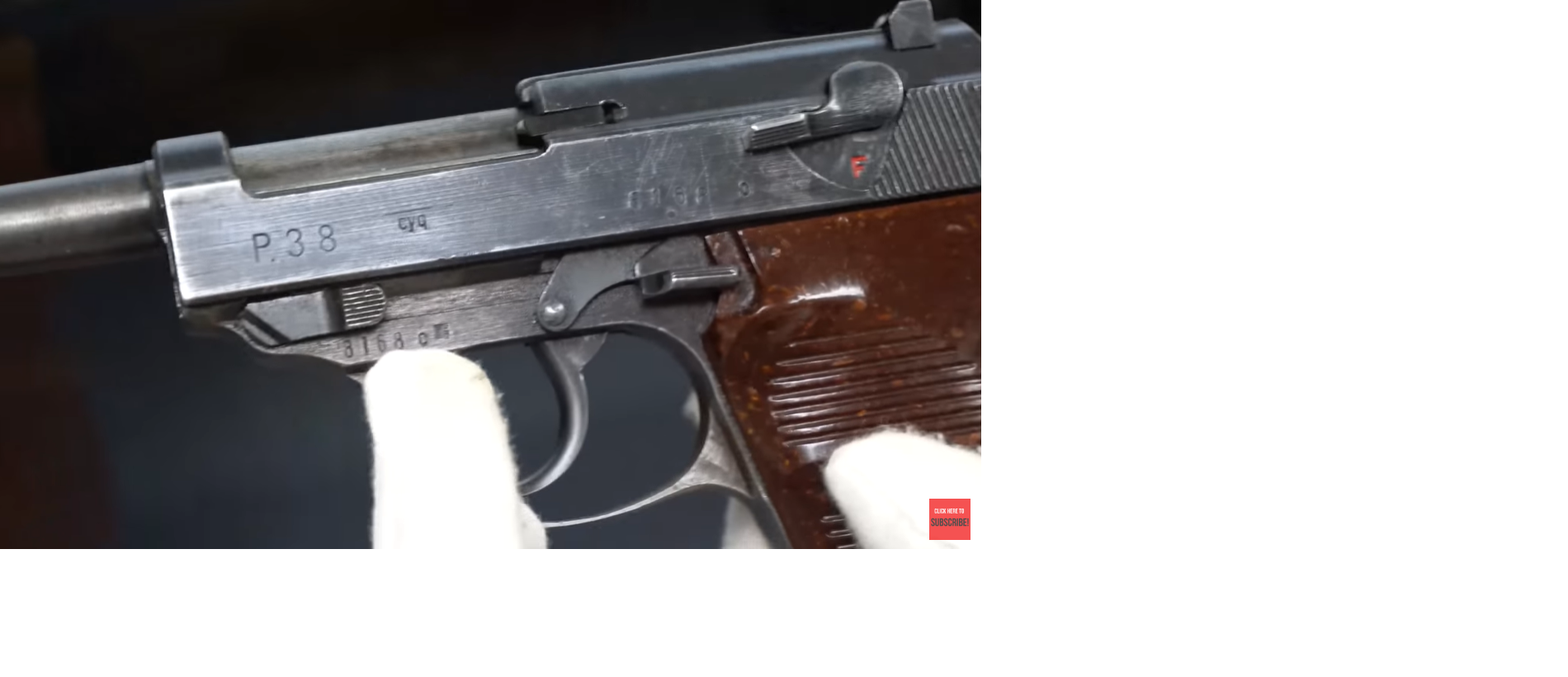
Here's an interesting factory error. Notice that, the C is backwards. Here the C is facing the right direction. That's an eagle 88 which is the proof mark for the inspectors at the Spreewerk Factory, and the C Block, that one of course being backwards.
Definitely a Spreewerk Grip
This is early 1943. Now, these are also Spreewerk grips and one way you can tell is you count the number of broken lines. This is a little bit of minutia, but that's why you watch this channel. If I look at the broken lines, I count 1-2-3-4-5, there are five broken lines and Spreewerk grips, this reddish color, Spreewerk grips had five broken lines and Mauser and Walther had six broken lines.
You know it does not have to be wrong
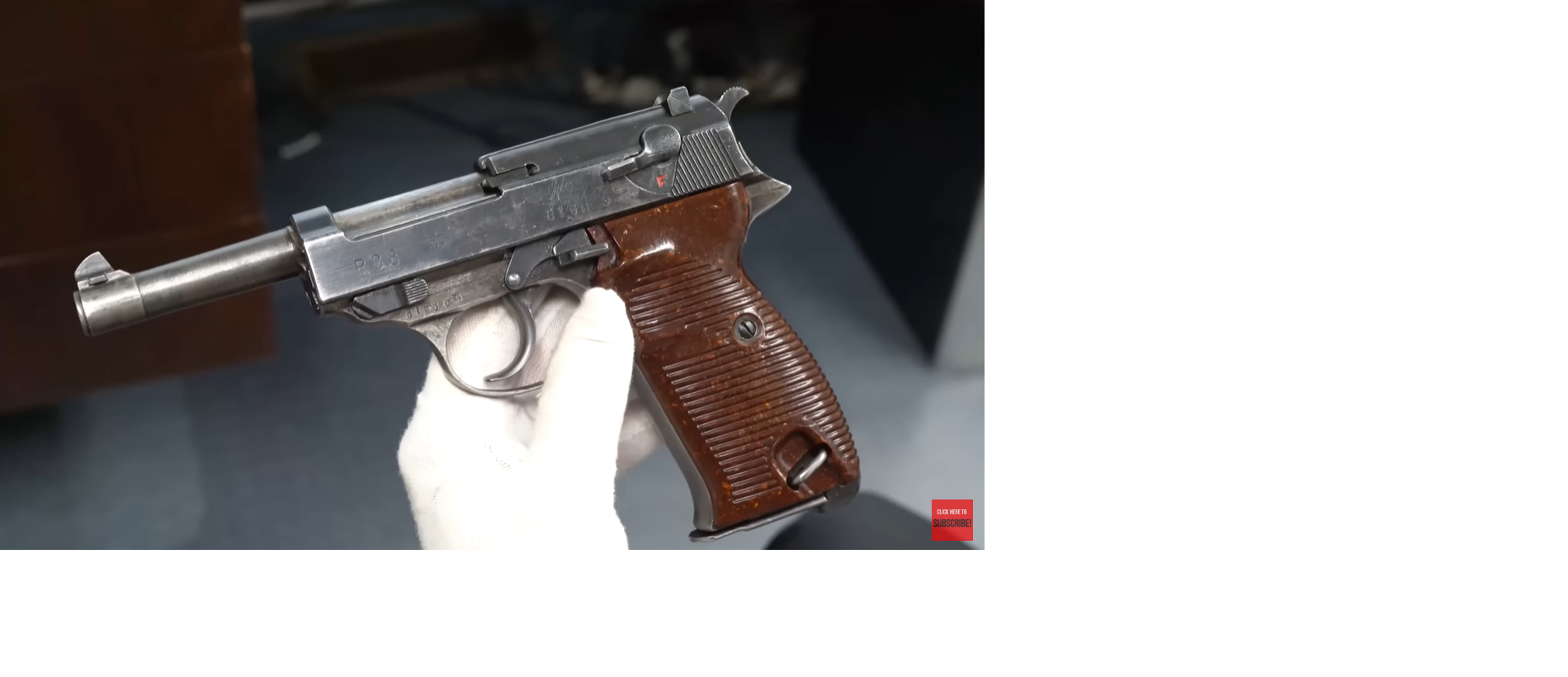
It's not necessarily wrong if it has the wrong grips. Sometimes they would run low on grips and so Spreewerk or one of the other factories would order grips from one of the other factories. We see that the same thing happened with lugers by the way, if you remember in 1940 Mauser was running low on grips and ordered some from Krieghoff. So we can find the orders where they say hey guys, I'm running out of grips can you guys send over a couple thousand pairs, but generally Spreewerk grips go on the Spreewerk gun, five broken lines.
Other places to look for matching numbers
The other place that it's numbered you want to check is the barrel is numbered under here. And finally, the last place you can look for matching numbers is the locking block and I'll do that really quickly.
The vet did not mess with this one, it's blued
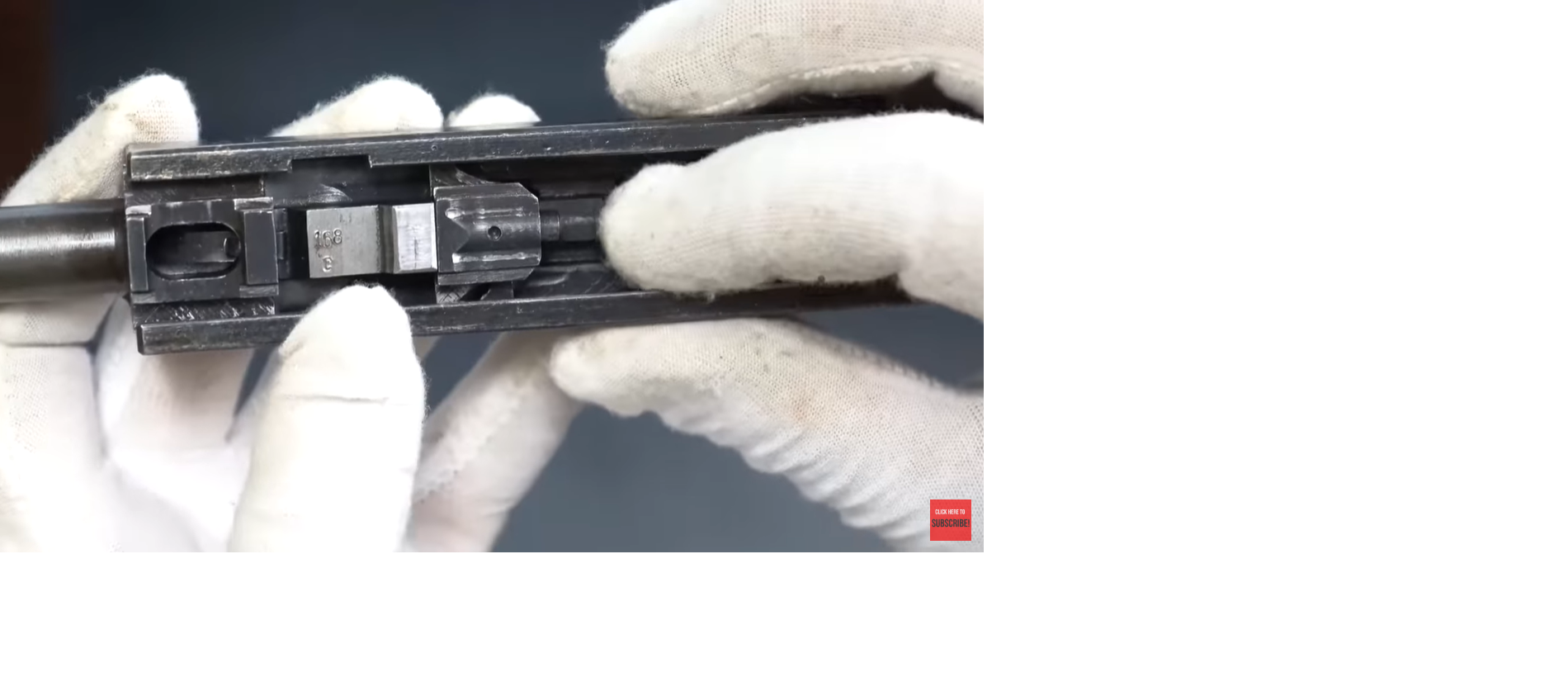
Okay, off camera I quickly took off that slide there's the pin. Notice this is blued Randy. I'm talking to Randy my cameraman because when we write descriptions, we often this is often in the white. But in this one we know it was brought back by the vet never messed with, and that is blued. So sometimes I guess they reused these, they were blued. Mostly they're in the white, the locking block, it should be in the white unless the gun has been re-blued.
Just as we thought, matching digits
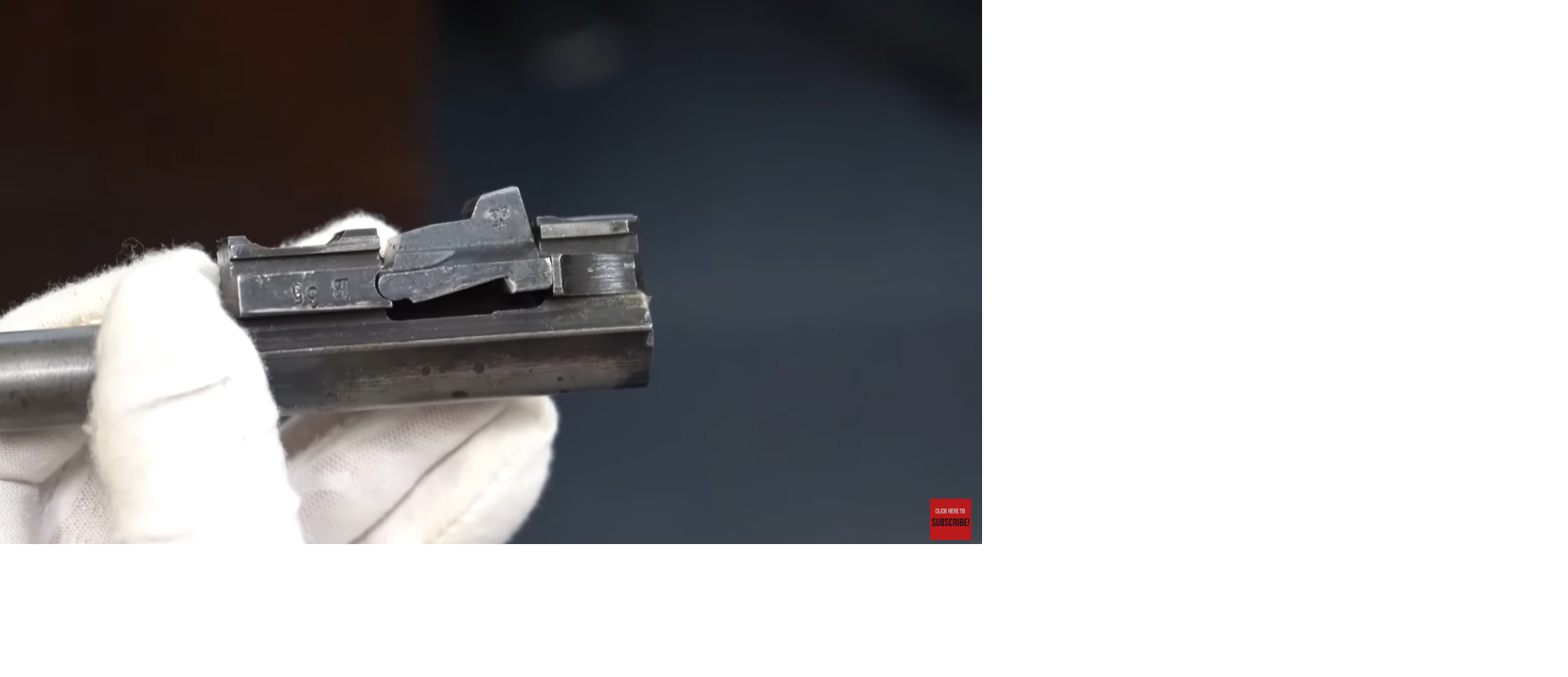
And here you can see it's the last three digits of the serial number with the C. So they only use the last three digits on the locking block. You will also see a firing proof here and some other proof marks. This is not the serial number of the gun, but you do see proof marks on the barrel and on the locking block. And we'll check out the bore and actually this is shiny and clean.
This gun has had some action
Clayton evidently, when he brought it home did not fire this very much because as I said it's shiny and clean. But when we look at the condition of the gun compared to the bore, this is pretty well used.
You'll hear more in the capture story
Now when we get to the capture story we're going to find out that this was captured right after the Battle of the Bulge in December of 1944. So this soldier picked up this gun in 1943, he carried it outside in the snow, in the rain, in the mud. He probably didn't shoot it a whole lot but you can see it's pretty worn. Almost no finish on the front strap under here. So it's pretty beat up, but as I said the barrel itself looks like he didn't shoot it a whole lot probably used his rifle more.
The holster too, it's been heavily used
And the same is true for the holster. This is really dulled down which tells me usually has like a black lacquer are on it that makes it kind of a shiny, this is dulled down. Probably it was wet, it gets wet soggy, you wipe it down. You'll also notice this is broken. It's pretty obvious that's broken, and the pull up strap is broken. So this again was heavily used when we hear the story we'll find out that when Clayton captured this he brought it home and never really used it. So I'm sure he probably brought it home in this broken condition.
Oh look, it comes with a spare magazine
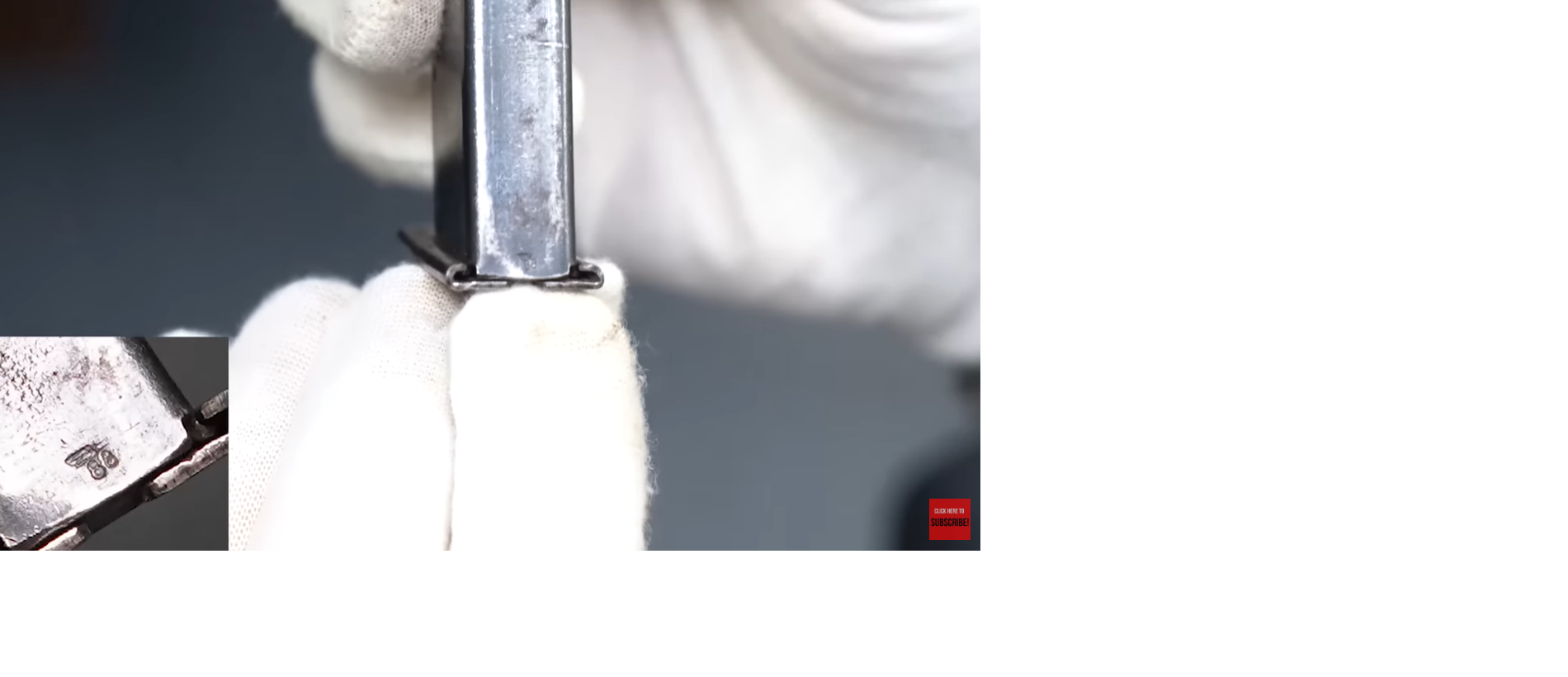
It does come with a spare magazine, which is correct for Spreewerk. It is not marked here. But we do see a very tiny Eagle 88 which is the proof mark for Spreewerk. And then the magazine that was actually in the gun. We can see that this one is proofed here. I can't see the 88 but it is JVD which was a sub-factory of Spreewerk. They made the magazines close by for Spreewerk. You'll also see the U which means this was made pretty late in ‘44 most likely. So this was probably added later. This is probably the magazine that was issued with the gun in 1943.
Let's back up to the holster a bit
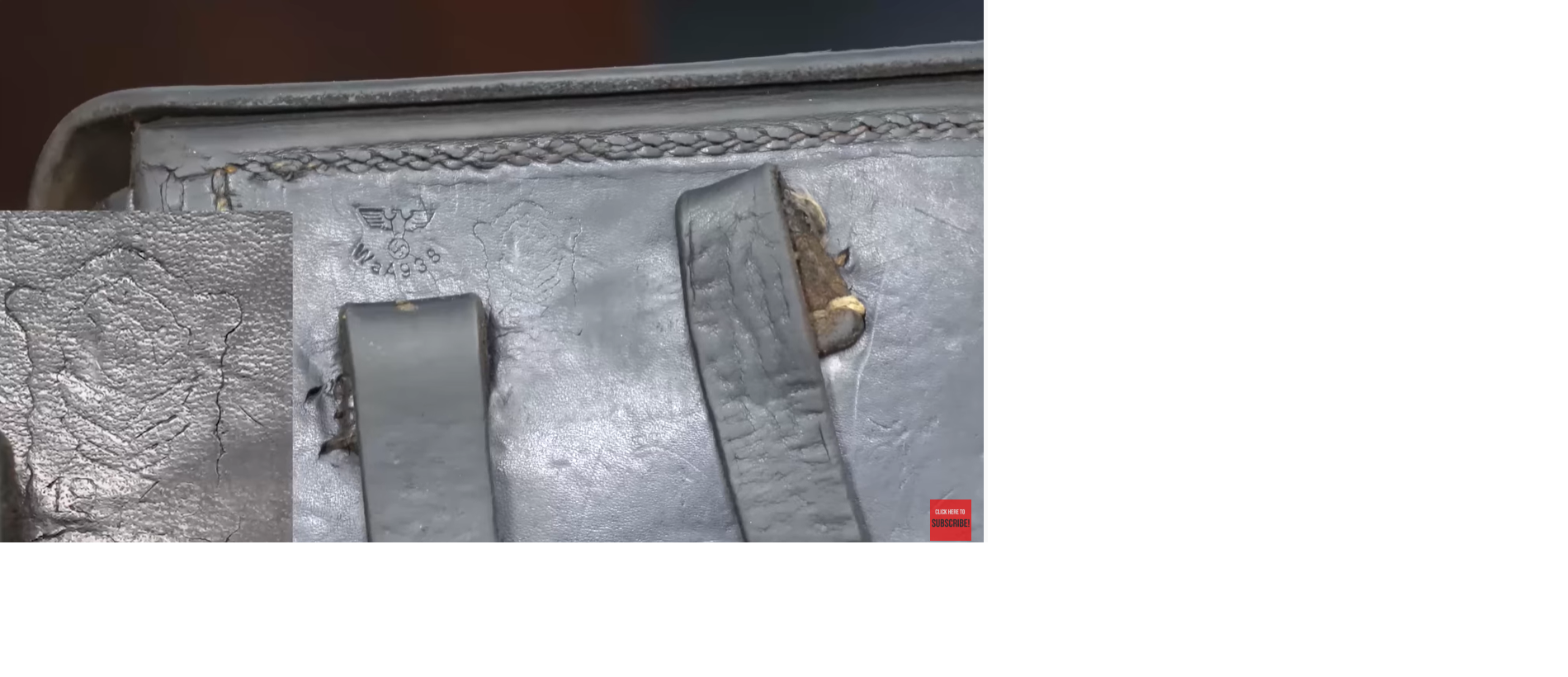
Going back to the holster, talked about what was wrong with the holster. But here's what's right about the holster. It does have a Waffen stamp, it was accepted into the military. And here. This is the Albrecht Kind Factory. That's their logo. It's called the bear skin logo. And there's actually an oak leaf in the middle, very faint, but it's bear skin with an oak leaf logo and under here it says 1943. So this very well could have been the holster that was issued with the gun.
Now for the juicy details
Now let's find out a little bit about how this gun was captured. And it wasn't from a dead SS officer. This gun and this write up came to us from Carl Decker and let me just say kudos to Carl because he's preserved the history. I wish every collector had done this. What he did, is he did a historical background check. He also got written documentation about how the gun was captured, about the vet who brought it back, Clayton, he ended up being a major by the time he was in Korea. Again, US Army Air Corps and then later the Air Force. He enlisted, this is Clayton not Carl.
Much appreciated Carl

Carl is the one that gathered this information. It makes my job so much easier not to have to go back and find all this plus the vets by now have usually passed away. But Carl, considered himself a military historian went and tracked all this down. So again, I can't tell you how helpful this is. And when you buy a piece of history like this isn't a great to have all this outlined
A little back story to Clayton
We can see that his date of enlistment was soon after Pearl Harbor so January of 41. Evidently he sat and watched in horror as Pearl Harbor took place. And then very quickly went down enlisted into the army. He graduated from Officers Training School as a Second Lieutenant in June of 42.
Do you know how the military school works?
Those of you who have been in the military, you know when you first enlist, they say what do you want to be? And they want to be a general, but what they do is they give you a series of tests, mostly intelligence test and critical thinking, flexibility, ability, make decisions, etc. And they pick candidates from that testing for the officer training schools. So this tells me he came in as a private, they saw something they liked in his testing and his character, and so they sent him off to officer training school. And then of course, by the time he graduated, he was Second Lieutenant. I believe everybody comes out of Officer Training School as a second lieutenant.
Clayton got a lot of medals
He then stayed in the military throughout the Korean War. He received a 11 Air Medals. You can see them listed here. The Africa campaign, the European campaign, National Defense Service, Korean service and longevity award, I guess that's just for being in the Air Force for so long. And then of course, United Nations because technically they conducted the war in Korea, when in fact, I know he served in the US Air Force. There is Clayton's signature and he was from Tampa, Florida, a place that I have been many, many times. I really enjoy my time in Florida; mostly Clearwater Beach, and he would know that area well.
We mentioned this bit already
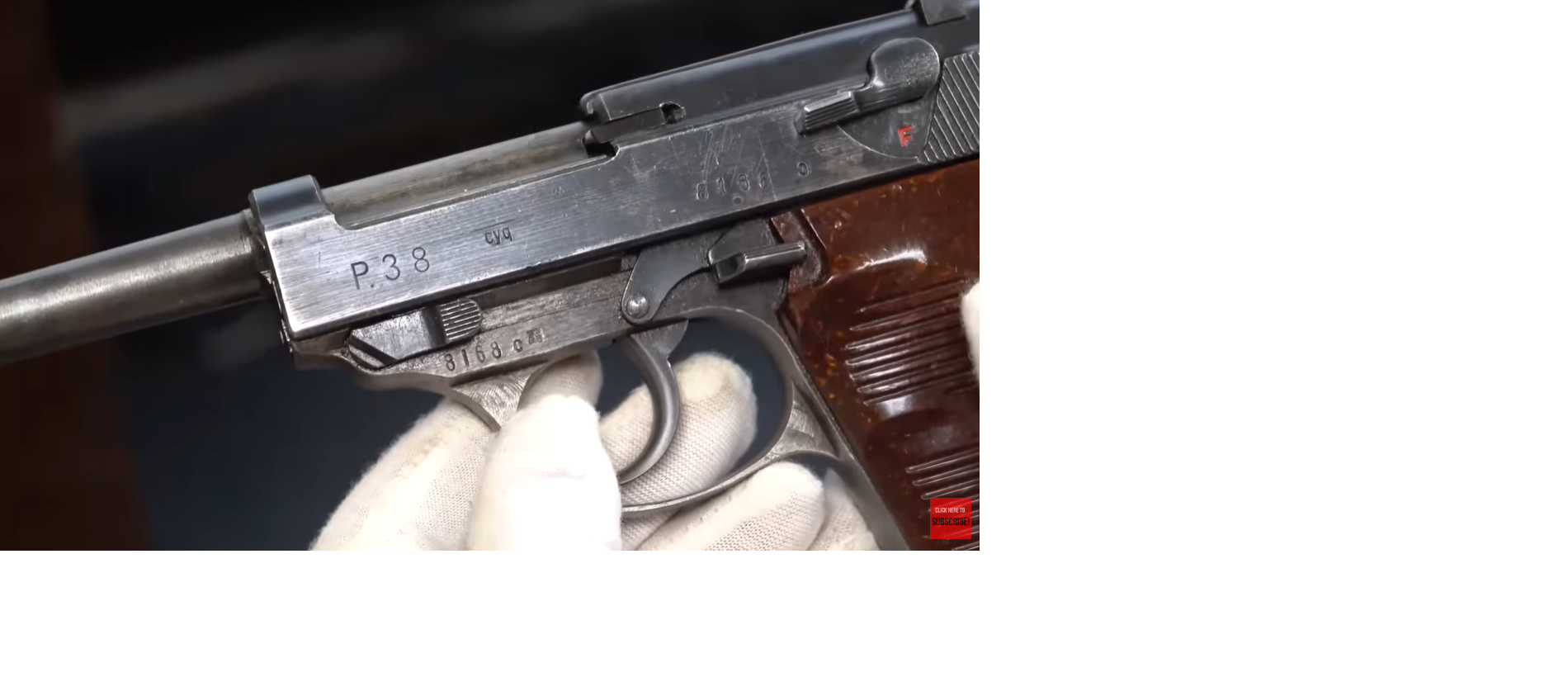
Now, let me tell you the story that Carl Decker was able to glean from Major Clayton Mason. So he tells us a little bit about the actually the gun was made at Spreewerk Factory, I've already mentioned that. It bears the code CYQ and it also has the Waffen stamps 88 which was the inspector stamp from The Spreewerk factory he mentions the holster being the Albrecht Kind Factory made in Berlin Nuremberg, during 1943.
Here is Carl's Story on Clayton
I first met Clay Mason in January of 1972, when he first joined the Dunedin Police Department, right outside of Tampa by the way. I met him at the Tampa Police Pistol Range in Tampa, Florida. He was a deputy at the Hillsborough County Sheriff's Office at the time. We became good friends over the next 20 years. In September of '86, he decided to sell me his prized war trophy, his P.38 for my collection. So evidently, Carl was a collector of World War II handguns, just like many of us. He was kind enough to fill in one of my collection forms and give me a photo of him with his pilot's flying gear next to his beloved B26 Bomber. You can see that here. Clayton relayed to me how he acquired his pistol.
Did they really do this?
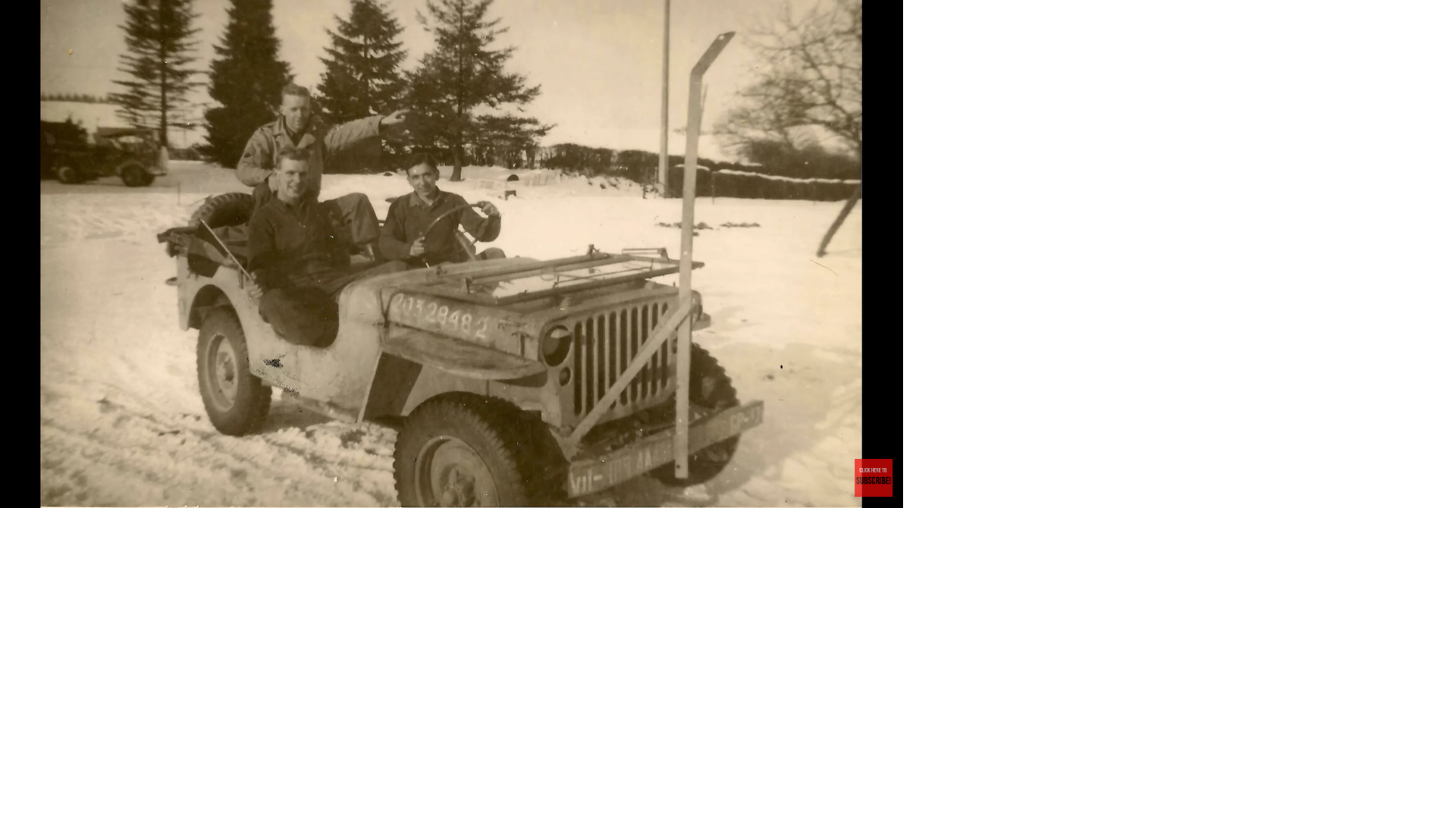
During the Battle of the Bulge Campaign in the Ardennes in December of 1944, he was flying food and ammo to our troops within a half mile of the actual front lines. This is on another day -- He and his co-pilot took a jeep and drove to the front looking to get a souvenir. Find that kind of funny. Hey, got a day off. Let's go up to the front and see if we can find a souvenir. They saw a group of German prisoners being stripped of their weapons. They asked the guard hey, can we each get a pistol? Yeah, I can just see him drive up, hey, you got a pistol. He told them go ahead and grab something and Clayton grabbed this P.38 and the holster to go with it. They have remained in his possession until he sold it to me in 1986. This grouping consists of the pistol, the holster and an extra magazine. I also got a signed collection form and photograph of Clay in his uniform next to his beloved B26. Bomber. And by the way, he also flew the B26 in Korea as well.
Sincere Appreciation to Clayton and Carl
Clayton, thank you for your service to our country in two wars, and also Carl for your diligence in collecting military history and passing it on to the next generation. It makes all of our jobs a little bit easier.
Giveaway Time
Now, I have some giveaways. You like free stuff, just let us know what you're interested in and we will send it out to you. Let's get started.
Just tell me what you want
First we have it's got to be a good old US made holster. This came with a 1903 hammerless, but it also looks like it might fit a revolver. But if you like free stuff this is available. Next I have this end cap. Yeah, do you recognize this if you know sniper rifles, it's actually a spotter scope. I think it's called the Z F42. This is the end piece which would be the sun shield. Right now I don't have the scope to go with it. So I'll give that away. Otherwise I'm allowed to lose it. This is actually pretty interesting. Those of you who know this is a training rifle, I believe a 22 caliber training rifle that goes on to the end of the muzzle and it's a muzzle cover for a 22 caliber Mauser or other kind of training rifle. I think they sell for about 150 bucks, but we're giving it away for free.
Let me be gentle now
Now I have to be a little gentle here but I have two sets of Sauer grips. These are cracked pretty badly. You can see they're dirty. They are original, dirty inside and out. Actually, this one's not too bad. But this first set we'll give away. These came together. Again Sauer 38H and then the second one is broke even worse it was broke. And then somebody just glued it not very well. But if you're good handy, you can probably repair that better. This one is also cracked and broken. So this set is completely broken both of them and we'll give away this for free and we'll give away this for free.
Let me throw in some Legacy Giveaways too

Okay, this is not a World War II relic but this was this is old in that. This is the Legacy jigsaw puzzle that we gave away Last Christmas I have a few leftover. If you would like one I'll send it out for free because nobody wants to read gift for next Christmas. Next I have only one copy left of the History of Firearms. We've given away a few of these and I have one more. Peter Kunz and it's the History of Firearms. This is basically antiques. It really does not go into modern guns or any World War II items. It stops I think -- well it says right here at 1900. So 1200 - 1900 AD. And then I have this Walther box. This is original Walther PP. It's pre-war actually, but it is beat up pretty bad. Now again, somebody handy might be able to semi-restore, somebody put tape on it and when you pull the tape off that kind of hurts it. If you open it up inside this is it. The outside has all been taped. And you can see the lid. It's got the yellow interior, but again, it's been taped. So we'll give away this for free. If that's something you're interested in, just let us know. I like free stuff and you're interested in this box.
Yes, I saved the best for last

Okay, I had just saved the best for last because we did a whole video on these relics that were dug up in battlefields, maybe the Ardennes. But actually these were dug up from Eastern European battlefields so mostly Ukraine, Lithuania, Poland, and they are completely rusted. I had to save them for last because once I'm done this I have to throw away my gloves. Now I have a couple sets of just Luger parts. If you're interested let us know you like the relics. I do have extra grips that were dug up. These are all pretty beat up. Not really usable. I do have a Luger. Now my pants are going to get dirty. I have a Luger here that was dug up. And we can send that out, it makes a nice display piece. That's all original finished, by the way, never been re-blued, but we would give that away. And then finally I have this snail drum again relic that was dug up in Eastern Europe. And we're going to give that away. And so if you're interested, let us know. And I'll get some of this off of the floor of my room.
Look out for the videos on the Third Reich Lugers
Hey, thanks for watching. I feel like Mike Rowe with dirty jobs. Stay tuned. We'll have a lot of videos coming out soon on Third Reich Lugers. I hope you liked today's tribute to one of our vets.
